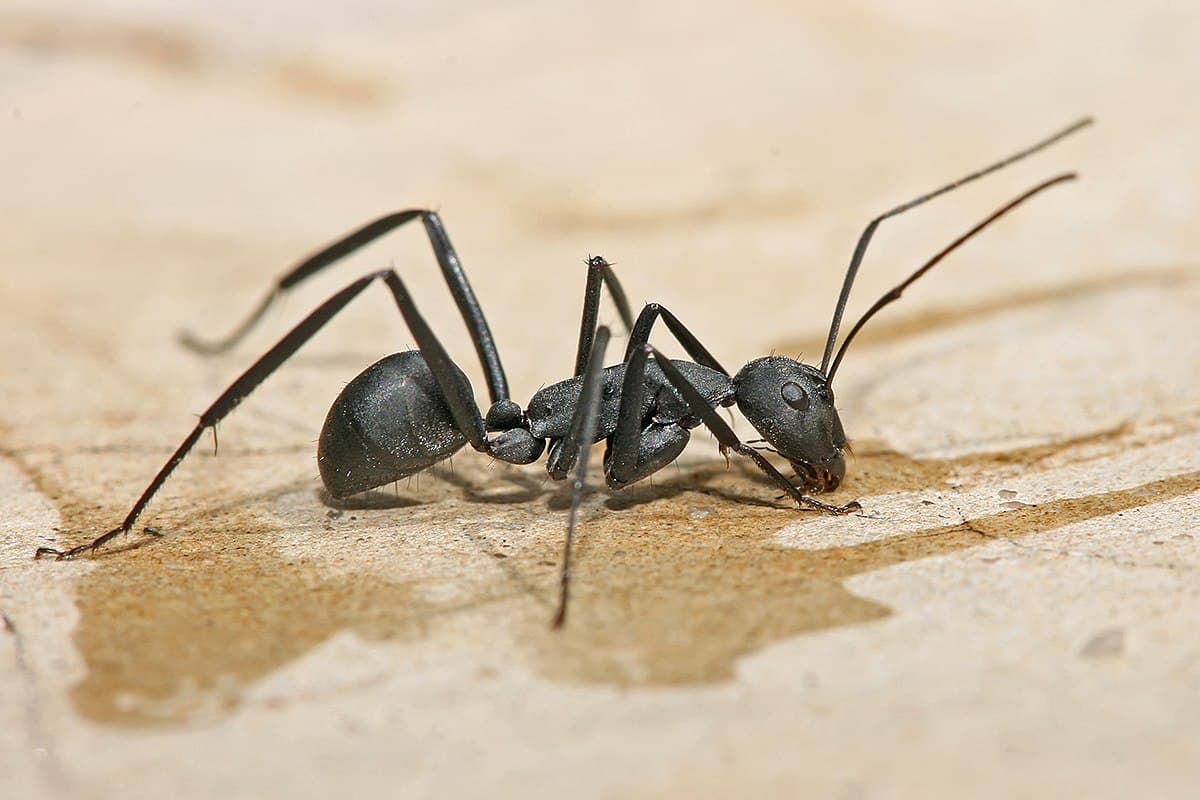Carpenter Ant
Camponotus spp.
AntsLarge black ant, 1/4 to 1/2 inch long (workers). Excavates wood to create nesting galleries but does not eat wood - critical distinction from termites. Inhabits wood for nesting purposes only; they do not use wood for food. Prefers moist or damaged wood. Leaves sawdust-like frass. Can cause structural damage. Thin-waisted appearance and elbowed antennae distinguish from termites. Exhibits complete metamorphosis. Chewing-lapping mouthparts.

Control Methods
Recommended methods for controlling this pest
Common Harborage Locations
Where to find this pest during inspections
| Location | Why Found There | Priority |
|---|---|---|
| Wall Voids | Protected from disturbance, temperature controlled, provides nesting material and travel routes throughout structure. | High |
| Floor-Wall Junctions | Natural collection point for debris, provides shelter, and travel routes. | Medium |
| Exterior Foundation | Entry points to structure, protection from weather, moisture accumulation. | High |
| Mulch & Landscape Beds | Moisture retention, organic material, cover from predators, bridge to structure. | High |
| Firewood Piles | Moisture retention, bark provides food and shelter, direct contact with ground, proximity to structure. | High |
| Stored Lumber | Wood-destroying pests consume material, protection from weather, often in contact with soil. | Medium |
| Tree Branches Touching Roof | Direct highway into structure, protection during travel, access to attic spaces. | High |
| Dense Vegetation Against Building | Moisture retention, bridge to structure, protection from predators, food sources. | Medium |
| Wood Framing | Direct food source for wood-destroying insects, hidden from view, often has moisture issues. | Critical |
Important Disclaimer: The information provided in this knowledge base is for educational and reference purposes only. Pest management professionals should always consult current product labels, Safety Data Sheets (SDS), manufacturer instructions, and applicable local, state, and federal regulations as the definitive source of truth. Product formulations, application methods, safety requirements, and regulations may change over time. This information may be out of date and should not replace professional judgment, proper training, or required licensing and certifications.